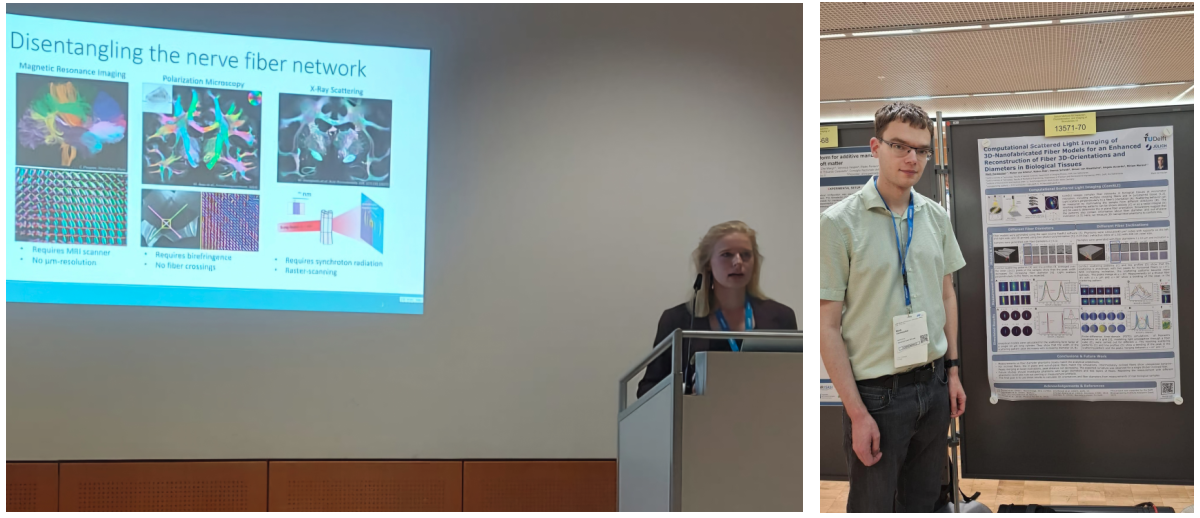Presentations at World of Photonics Congress
June 22-26, 2025: Loes Ettema and Mark Vermeulen have presented their work at the World of Photonics Congress in Munich, Germany. Loes gave a talk about “Exploring backscattered light microscopy for visualizing fiber network organization in intact biological tissues” and Mark presented a poster on “Computational scattered light imaging of 3D-nanofabricated fiber models for an enhanced reconstruction of fiber 3D-orientations and diameters in biological tissues”.

Exploring backscattered light microscopy for visualizing fiber network organization in intact biological tissues
Fiber network organization in biological tissues is related to tissue functioning. A good understanding of this relation requires imaging techniques that can disentangle the densely interwoven fiber networks. The imaging technique computational scattered light imaging (ComSLI) retrieves the orientations of fibers at micrometer resolution, independent of tissue staining and also in regions with complex fiber crossings. So far, ComSLI has only been applied to thin tissue sections in transmission mode. Here, we explore for the first time the use of ComSLI in backscattering mode, with the aim to visualize fiber organization on intact tissue surfaces before sectioning. This may ultimately speed up histological analyses and open up new applications such as fiber network visualization on tissue surfaces intraoperatively.
Computational scattered light imaging of 3D-nanofabricated fiber models for an enhanced reconstruction of fiber 3D-orientations and diameters in biological tissues
Computational scattered light imaging (ComSLI) exploits the scattering of light to disentangle densely interwoven fibers with micrometer resolution and over large fields of view. The technique can be applied to a wide range of histological tissue samples (independent of staining or preparation) and requires only an LED light source and camera, making it attractive for histological tissue analysis. Although previous research has shown that the measured scattering signals also contain information about the out-of-plane fiber angles and fiber diameters, ComSLI has so far only been used to determine in-plane fiber orientations because tissue samples with well-defined fiber structures are missing. Here, we measure 3D-nanoprinted fiber models generated with different fiber inclinations and diameters to study how the measured scattering signals depend on the underlying fiber structures, and finally enable a more reliable determination of fiber 3D-orientations and diameters from ComSLI.